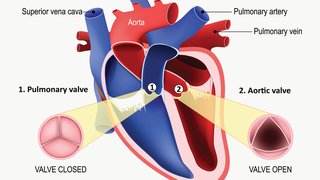
In recent years, statins have been the go-to drugs we’ve prescribed for heart disease patients who are at high risk for heart attacks and high cholesterol. That’s because taking statins is a proven way to lower the bad form of cholesterol (LDL) and thereby reduce heart disease risk.
The only problem with statins is that not everyone can tolerate them or respond to them sufficiently, and they can cause side effects in some patients.
Well, according to results of a study released in November 2014: Good news. There’s a new LDL-lowering drug on the block. It’s called Vytorin, which is a pill that combines a statin called simvastatin with a drug called ezetimibe. Because Vytorin is a combination of those two drugs, it lowers cholesterol to levels never tested before.
Statins prevent the production of LDL. Ezetimibe lowers LDL by preventing cholesterol from being absorbed in the gut. The six-year study of 18,000 people showed that taking the two drugs together in the one combination pill lowered LDL more than taking simvastatin alone.
Here are my three takeaways from this study:
The lower your LDL, the better
We’ve known for quite a while now that high levels of LDL can lead to heart disease. This study provides even more evidence to support that hypothesis. By using a new strategy to lower LDL to unprecedented levels, participants experienced benefits related to heart disease and stroke – namely, they experienced fewer of each, along with less heart surgery and less chest pain leading to hospitalization.
In other words, these data suggest that the lower your LDL, the better off you will be.
This is a new twist on the Guidelines for Treatment of Blood Cholesterol released last year, which de-emphasized LDL targets.
What if a different statin had been used?
The 18,000 subjects of this study were heart patients who were randomly assigned to take either the “enhanced statin,” Vytorin, or simvastatin alone, which is the statin used in Vytorin. But as far as statins go, simvastatin, while perfectly fine for many patients, is only a moderately effective drug; many other patients require a more powerful statin, such as atorvastatin or rosuvastatin.
It would be interesting to know if those higher-potency statins would have been just as effective as the combination of drugs used in Vytorin.
More investigation needed
In some ways, the jury is still out on aspects of this topic. We won’t be able to further analyze the data until it is made available in a peer-reviewed publication. Until then, we have to maintain some degree of caution.
But overall, this report provides cardiologists like myself with another tool to help patients, and that’s great news.











